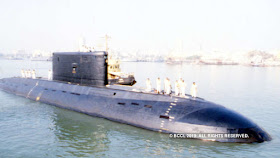 |
| An infographic of the proposed SAFTI City. Photo c/o Singapore MINDEF. |
The Singapore Armed Forces (SAF) is expected to have a new 88-hectare urban operations training centre, which will be called SAFTI City.
The decision to build an urban operations training centre stemmed from evaluation by the SAF and Singapore’s Ministry of Defence (MINDEF) that the chances of fighting future conflicts in urban areas, including homeland defence, counter-terrorism, and peacekeeping operations has gone up compared to jungle operations.
The project, part of a larger SG$900 million (US$660 million) program to improve the SAF’s training facilities, will be jointly developed by the Defence Science and Technology Agency (DSTA) and the Singapore Army.
Phase 1 of the SAFTI City project, sizeable enough for a brigade-level training, will feature 70 mock buildings including three 12-storey structures, high and low-rise interconnected buildings and underground structures including a mock subway and subway station with decommissioned trains, a bus interchange with mock buses, multiple road networks and dense building structures which can be reconfigured to a different layout. It is estimated to cost around US$295 million to build.
The training complex will also use smart simulation technologies, including the use of blast and smoke generators, and mobile targets with shoot-back capabilities to enhance realism and effectiveness of the training environment.
Video cameras and battlefield instrumentation will be used to track the trainee’s real-time actions and evaluate individual and team performance using a data analytic system.
Phase 1 of SAFTI City is expected to open by 2023.
MINDEF cited Marawi conflict in the Philippines in 2017, wherein Philippine security forces suffered casualties from terrorist snipers and lack of of familiarity in massive urban warfare operation. The Armed Forces of the Philippines (AFP) has requested the SAF for assistance in urban operations training, and has also been using SAF’s current urban training facilities to improve its capabilities.
The SAF is also building a joint training facilitiy with the Australian Defence Force (ADF) in Queensland, Australia which includes urban and open field warfare operations.
[1]
Singapore Ministry of Defence (MINDEF)
[2]
Straits Times
[3]
Jane’s International Defence Review
























